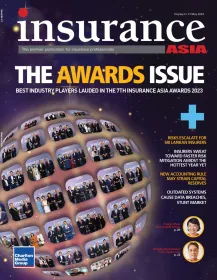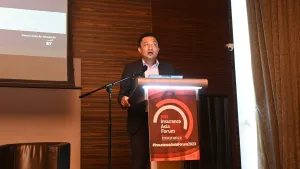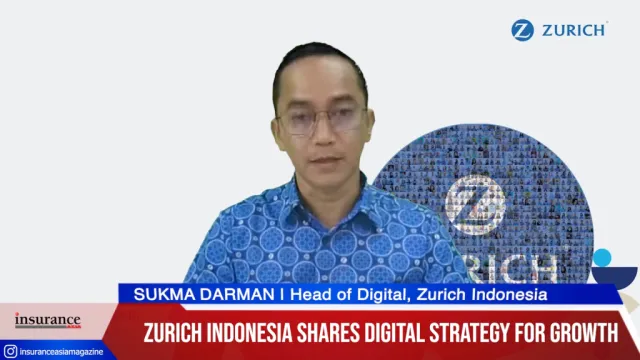
Proactive dialogue with regulators, embracing tech advancements are key to preemptive compliance – EY's Anita Sun-Young Bong
The EY Partner reiterated that though innovation carries inherent risks, balancing it with risk management through crisis simulation systems ensures sustainable progress.
In today's rapidly evolving digital landscape, the insurance sector finds itself at a crossroads, where traditional practices intersect with groundbreaking technological advancements. As financial technology (fintech) and digitalisation reshape the industry, insurers are compelled to recalibrate strategies and navigate through regulatory complexities.
Anita Sun-Young Bong, with over two decades of experience, has a wide range of expertise spanning banking, insurance, and capital markets. She has been instrumental in shaping the strategic agenda for EY clients.
Beginning her career with front system upgrades, she swiftly ascended through the ranks, championing compliance and back-office functional re-engineering across diverse sectors. Today, as a Partner at EY, Anita Sun-Young Bong spearheads future-vision setting and insights development, guiding clients through digitalisation, innovative technologies, and adaptive compliance strategies.
In this exclusive interview with Anita Sun-Young Bong, a judge at the Insurance Asia Awards 2024, we delve into the nuances of the insurance sector's transformation amidst the fintech revolution and regulatory upheavals. From the integration of artificial intelligence (AI) and big data analytics to the imperative of striking a balance between innovation and risk mitigation, she shares her expert perspectives on the industry's trajectory.
How do you see the insurance landscape evolving in response to advancements in financial technology (fintech) and digitalisation?
The insurance sector is poised for a transformative leap with the integration of AI and big data analytics. AI’s role is becoming all-encompassing, influencing product offerings, customer engagement, and distribution channels. The industry is also bracing for a competitive shift as embedded finance blurs traditional boundaries, inviting players from various sectors to innovate financial solutions.
In this new digital era, the key to success lies in personalisation. Insurers must harness data insights to understand consumer behaviours and preferences and tailor experiences that are efficient and effortless. Fintech and digitalisation are the catalysts for expanding market reach and refining customer touchpoints with insurance products.
What strategies do you believe are essential for insurers to adopt in order to navigate regulatory changes effectively whilst maintaining operational efficiency?
The major regulatory change in the AsiaPac insurance industry, IFRS17, has begun to take shape, and insurers are generally responding well to it. Despite different timelines across jurisdictions and company sizes, there’s a reasonable understanding of the regulatory trajectory. Anticipating further IT-centric regulations, insurers must prioritise proactive dialogue with regulators and embrace technological advancements for preemptive early regulatory compliance. Industry collaboration is another strategic pillar, fostering a unified approach to customer-centric regulations. At the heart of these strategies lies a commitment to ethical conduct and robust internal governance, since many of these regulations are expected to focus on customer protection.
How do you advise insurers to strike a balance between innovation and risk mitigation when implementing new business strategies or adopting emerging technologies?
Innovation inherently carries risk, yet it’s essential for growth. Insurers should proactively engage in discussions with regulators to shape and understand forthcoming policies before passively adapting to them. Establishing crisis simulation systems is equally important, allowing for the anticipation and management of potential risks linked to new ventures. This proactive stance ensures that innovation progresses hand-in-hand with prudent risk management.
As insurance companies increasingly focus on sustainability and ESG, what best practices do you recommend for insurers to integrate ESG considerations into their business models and investment strategies?
Insurers must embrace ESG factors as core elements of their operational ethos and make efforts to embed ESG principles throughout their value chain. Management performance indicators should reflect ESG metrics, with a focus on the ‘Social’ dimension, aligning with insurers’ mission to safeguard lives and assets.
The industry’s commitment to societal well-being and environmental stewardship should manifest in collaborative ecosystems that offer comprehensive solutions and strengthen defences against climate-related risks. Establishing a reputation for corporate responsibility will resonate with consumers, fostering trust in insurance offerings. Insurers should also infuse ESG considerations into product design, risk evaluation, regulatory adherence, and meeting the rising consumer demand for corporate engagement that is environmentally and socially responsible.
Looking ahead, what do you envision as the biggest game-changers in the insurance industry, and how can insurers prepare to adapt and thrive in the face of these changes?
AI is set to revolutionise the insurance landscape, helping to redefine product innovation, streamline underwriting, automate claims processing and personalise sales strategies. AI’s capability to autonomously manage and recommend products promises a seismic shift in customer service and market demographics. Moreover, AI’s potential to supplant traditional sales channels heralds a new era of diversity in distribution and the rise of AI-only insurance entities, reshaping the industry’s competitive dynamics and market share outlook.
As a judge for the Insurance Asia Awards 2024, could you elaborate on your criteria or the metrics you consider when evaluating nominees?
I’ll consider three main criteria when assessing nominees:
- Innovation: The novelty and ingenuity of the solutions presented.
- Adoptability: The practicality of implementation across insurers of varying scales.
- Impact: The significance of the contribution to the insurance sector.













 Advertise
Advertise












